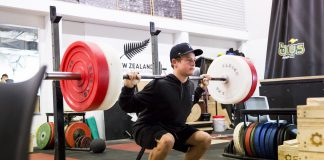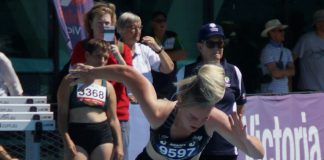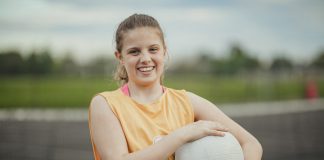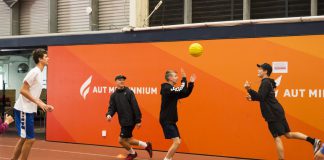Every morning, AUT Millennium’s Sports Hall is buzzing with noise. Music acts as a backdrop to the array of obstacles and equipment laid out, the clunking of weights providing a baseline for the laughter and conversation of young people coming together so early in the morning. It’s a cool environment, both literally and metaphorically, and somewhere young athletes can be challenged, fail, learn and conquer.
For Camille Coom, it’s this environment which makes AD Academy the ideal place for her son to work on his movement difficulties. “We don’t have to wake Austin up for these sessions,” she laughs. “He runs in here every single morning, he doesn’t want to be late. He absolutely loves it.”
Austin, 8, is a typical sports-loving Kiwi kid who enjoys tennis, rugby, cricket, golf, swimming and practicing karate. He doesn’t stop at school either, spending his lunchtimes playing sports with his friends. Last year, however, Camille noticed a change in his attitude. “He would come home upset because he would lose his friends when running around the school because he wasn’t as fast as them,” she recalls. “He wouldn’t get picked for sports teams because he couldn’t keep up. Anything to do with running, he lacked confidence.”
Camille says Austin has always had “a funny right leg and funny running style”, but medical investigations when he was an infant concluded that once he grew and began to run, all would be well. His running style is still more awkward than natural, and as it started impacting his confidence and happiness, Austin’s parents decided to try again. “A paediatric orthopaedic surgeon told us that his right leg is slightly inverted, but that it doesn’t warrant surgery now,” Camille says. “Our best option was to work on his muscle and ligament development, to try and teach him how to move correctly.”
It was an honest physiotherapist who told Camille that Austin needed a more suitable environment than a clinical, sterile physio rehab process. “She understood that for a shy kid lacking confidence, he needed to be around his peer group, rather than in a physio room and following prescriptive exercises.” The physio recommended Athlete Development, and after a chat with Programme Director Dr Craig Harrison, Camille and Austin came for a trial, and haven’t looked back. “It’s so good for him, he’s doing a lot of different things, so the interest level is there for him,” Camille says. “Everything is about using his entire body. Running, jumping, hurdles, functional movements. It’s much better for Austin and his muscle strength. It’s also teaching him that it’s okay to not be good at something right away, to fail, work to find a solution and practice until you get better.”
A big part of Austin’s progress is thanks to the personal investment of the AD coaches. The Academy is broken down into general age groups, so the children can work together and bounce off each other. As one of the younger children at AD, Austin is in the Junior group, and has worked closely with Andreas Fossum and current Junior coach, Ferne Kewish. “Austin was incredibly shy when he came to AD,” Andreas recalls. “He could often shed a tear in uncomfortable situations, had difficulty communicating his struggles and lacked confidence. Being able to conquer challenges in a non-judgemental environment with other kids his age has made a huge difference to his social skills.”
Ferne agrees, commenting on not only Austin’s physical advancements, but his personal growth as well. “Austin has come a long way since he started,” she says. “He now takes on challenges with open arms and enjoys working with the other young athletes.” During the sessions, coaches work with Austin specifically on his leg strength. “We focus on jumping, landing and balance movement challenges a lot in AD in general,” Ferne tells, “and this allows Austin to develop his lower extremity movements in creative and exploring ways.”
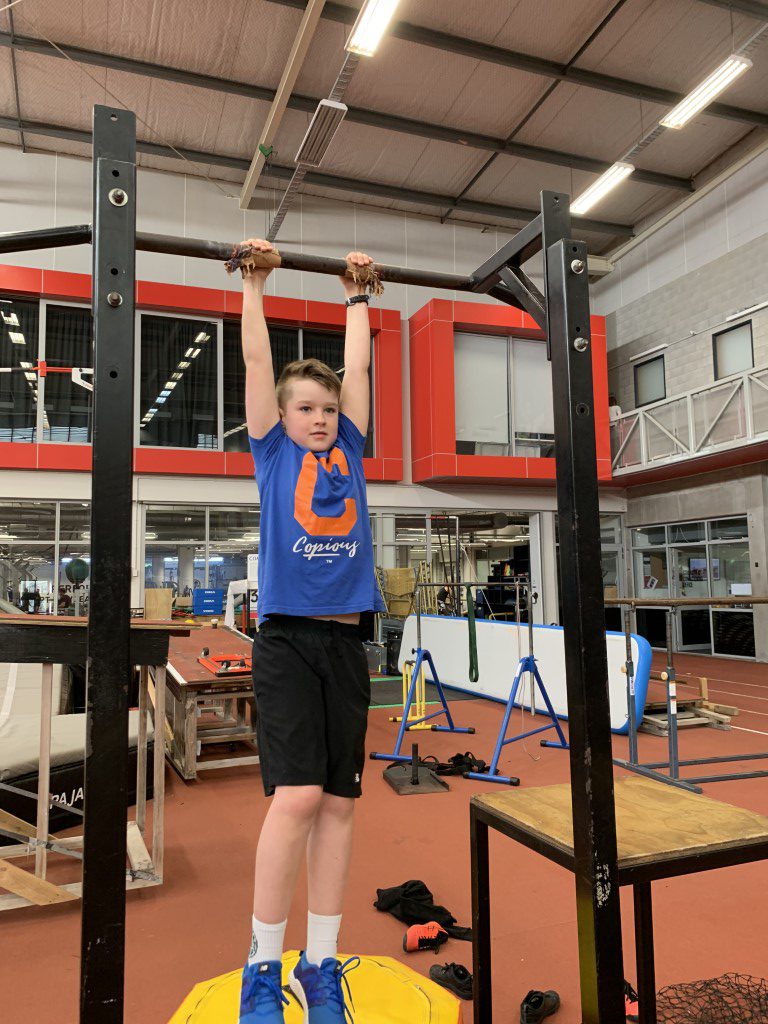
Making strides
Over time, these activities lead to better mobility, increased strength and speed, and Camille can see it’s already making a difference. “He is getting faster at running, you can definitely see that,” she tells. “At rugby, he will actually run with the ball now, whereas he wouldn’t in the past because he knew he’d get caught. There are lots of small wins we’re seeing in his confidence in his own abilities.” She compliments the AD coaches for their work with Austin. “It’s that individualised aspect which is really important, taking five minutes to work with each kid one-on-one every session they have,” she says. “These guys are sports science students and graduates who are fascinated by this stuff, and stepping in to support and mentor kids really pays off. The kids see an older person who is investing time in them, and it’s great for their confidence and self-esteem.”
Another benefit of the AD environment is its proximity to the High Performance Sport New Zealand training gym. In the early morning, young athletes are seeing the work and commitment put in by our leading professional athletes and sports teams. Austin was intrigued when he first saw a Paralympian with a running blade. “He had so many questions, and we talked about how the athlete had either had an accident or been born without a limb, and he’d gone on to find a sport he wanted to excel in, and was working towards that. It was good for Austin to see, because he understands that his issue – which isn’t huge, there are a lot of people worse off than him – can be overcome and not stop him from being whatever he wants to be.”
At only 8, Austin doesn’t have a defined sports goal at the moment, and his parents are happy to let him continue to find his own way. “We don’t have any specific goals for him, we will support him to find his passion on his own,” Camille says. “I think AD is fantastic for him through the next stages of his development. He knows he’s here to get his legs stronger, to help him keep up with his friends in the first instance. Through what he is learning at AD, we hope he finds a passion for movement and sport – whether that’s at a high performance level or not – which he’ll have throughout his life”.
For more information on how Athlete Development can help young people with movement challenges, get in touch with our Programme Manager Patrick Davenport [email protected]






























